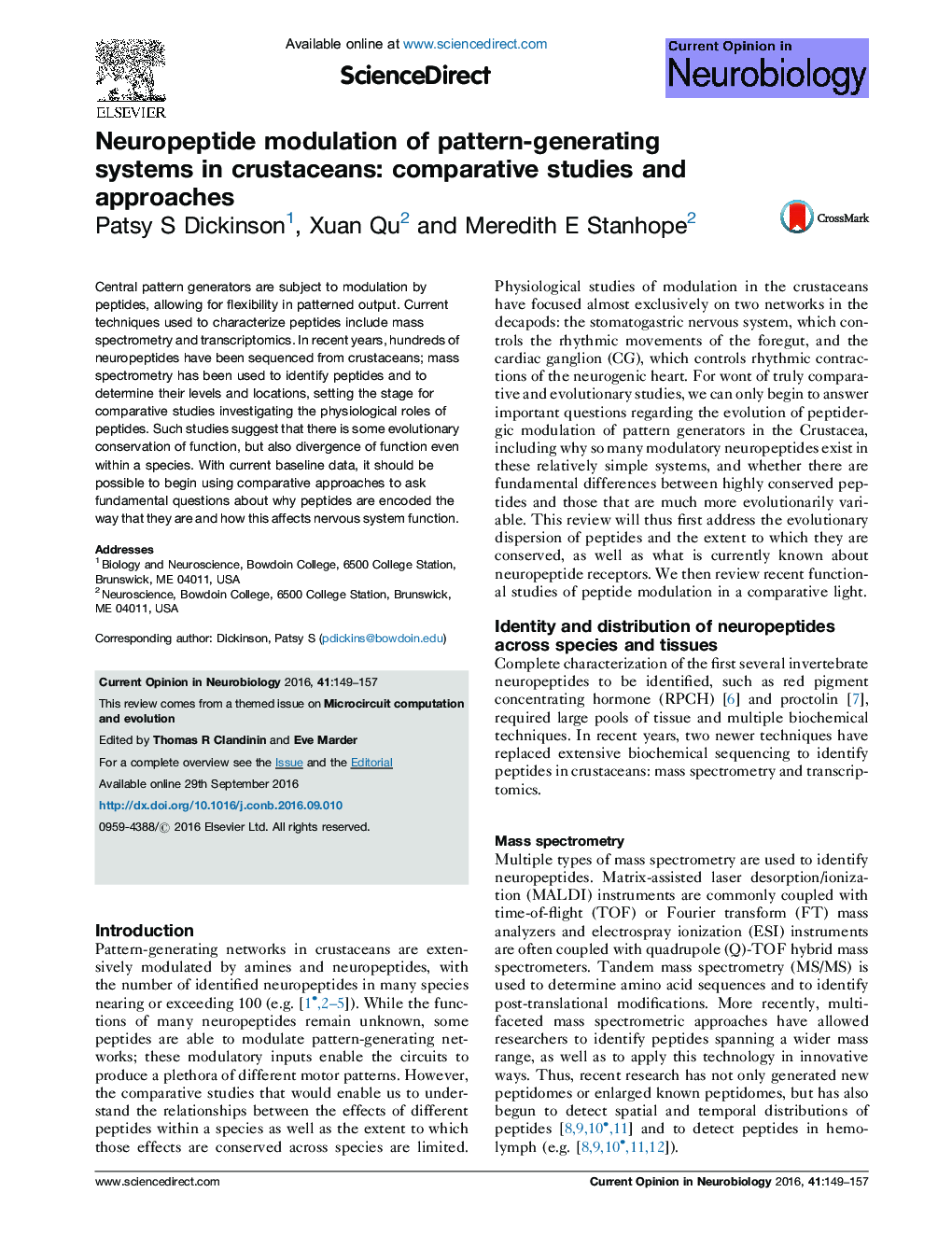| Article ID | Journal | Published Year | Pages | File Type |
|---|---|---|---|---|
| 6266128 | Current Opinion in Neurobiology | 2016 | 9 Pages |
â¢Mass spectrometry is used to identify and localize neuropeptides across crustaceans.â¢Transcriptomics allows peptide and receptor prediction from diverse crustaceans.â¢The extent to which peptides are conserved across species varies enormously.â¢Related neuropeptides often appear to have similar effects in diverse species.â¢Peptide isoforms can modulate motor patterns differentially within/across species.
Central pattern generators are subject to modulation by peptides, allowing for flexibility in patterned output. Current techniques used to characterize peptides include mass spectrometry and transcriptomics. In recent years, hundreds of neuropeptides have been sequenced from crustaceans; mass spectrometry has been used to identify peptides and to determine their levels and locations, setting the stage for comparative studies investigating the physiological roles of peptides. Such studies suggest that there is some evolutionary conservation of function, but also divergence of function even within a species. With current baseline data, it should be possible to begin using comparative approaches to ask fundamental questions about why peptides are encoded the way that they are and how this affects nervous system function.
